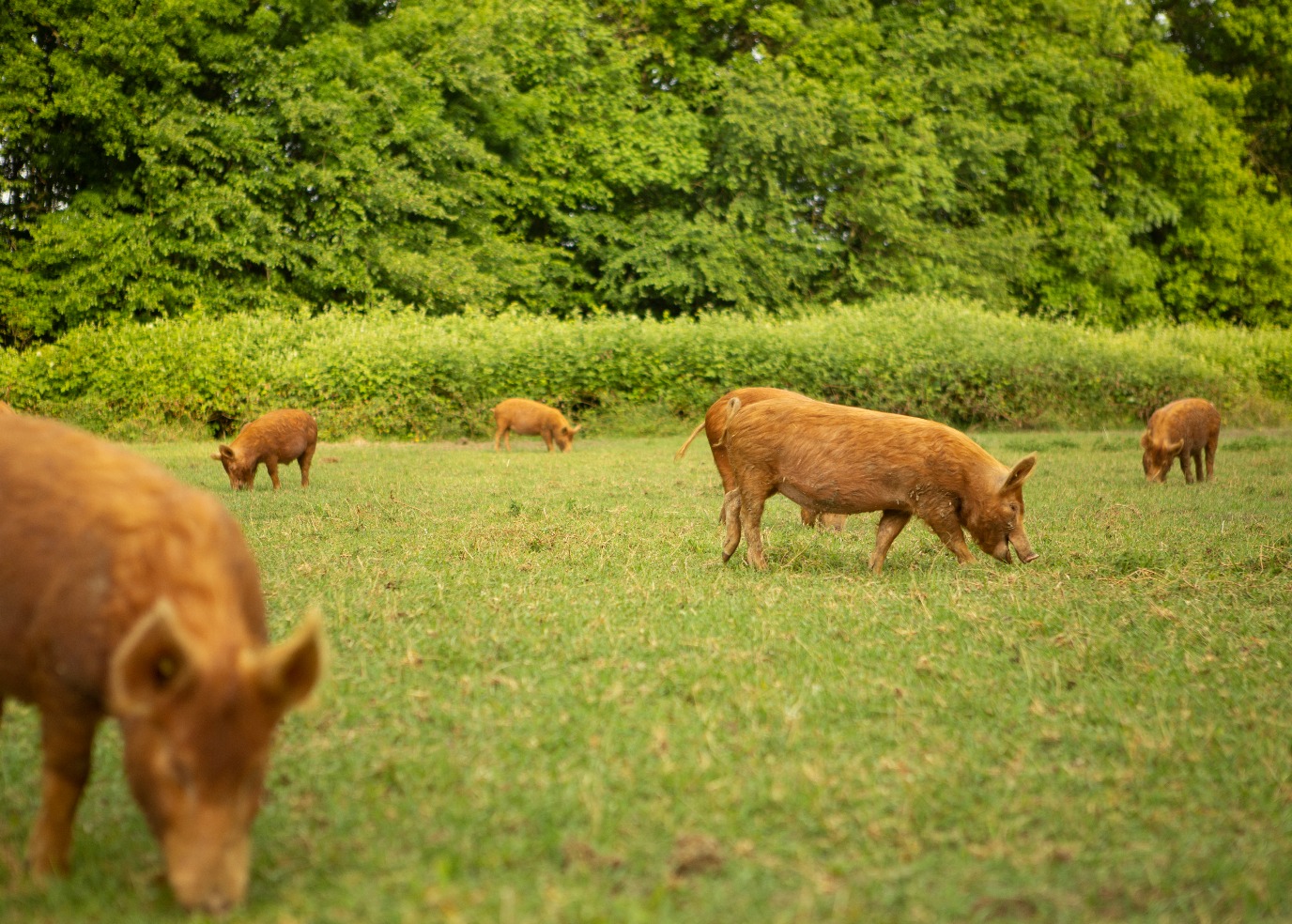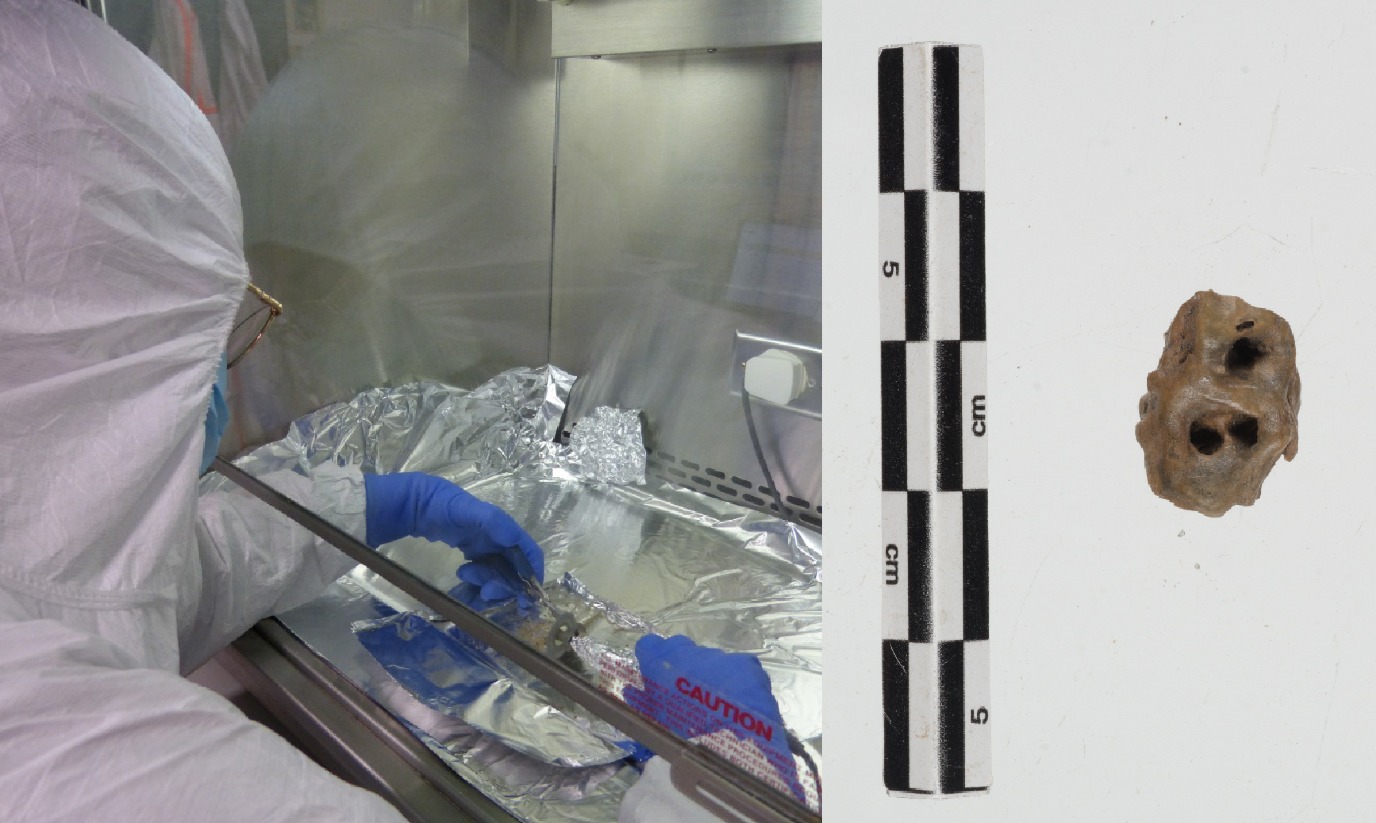Archaeology can Inspire Sustainable Pig Farming

Text by: Jolijn Erven, Canan Çakırlar, Tim van der Horn.
Extensive pig farming has both economic potential and environmental benefits—and archaeology is offering insights into how it can be done sustainably for centuries.
A new study published in the Proceedings of the National Academy of Sciences (PNAS) led by UG FoA researcher Dr. Jolijn Erven and RAS fellow Dr. Canan Çakırlar (Environmental Heritage Research Group) reveals that prehistoric farmers in the Netherlands relied on extensive, free-range pig farming, a practice that could inspire modern sustainable approaches. In early farming settlements like Swifterbant (c. 5,500 years ago), wild boar and domestic pigs roamed freely in co-existence, inter-bred, and survived on village garbage.

Learning from the Past for a Sustainable Future
The study merges different qualitative and quantitative techniques in archaeology, biomolecular archaeology such as biometry of zoological remains, radiocarbon dating, ancient-DNA and isotope chemistry to model prehistoric human-pig-boar existence Europe, using data from the Netherlands, Switzerland, and Ireland.
The model has clear sustainability advantages: According to Erven & Çakırlar “The freer, flexible approach of early pig farming can inspire a more animal-friendly and resilient system today. The growing interest in free-range pig farming mirrors ancient practices that allowed pigs to thrive in diverse environments. Pigs also contributed to a circular economy by recycling human waste into protein.”

Preventing loss of biodiversity
The study also highlights the risks of modern industrial pig farming, which has led to a decline in traditional pig breeds, reducing genetic diversity and increasing vulnerability to disease. “Research into the genetic diversity of prehistoric pigs can help us breed more resilient pig populations,” Erven explains. “This benefits animal welfare, improves disease resistance, and could increase the taste profile of the meat.”
The findings also suggest that pig farming doesn’t have to be confined to large-scale, industrial operations in remote areas. The archaeological evidence from Swifterbant shows that pigs lived in close proximity to humans, offering a model for integrating small-scale pig farming into increasingly human-dominated environments today. “Bringing farming back among the people could make food production more sustainable and transparent,” says Erven.
By looking at the deep history of human-animal interactions, archaeology provides valuable perspectives on how past farming practices can inform more sustainable choices for humans and non-human animals in the future.
The full study was funded by the NWO Open Competition Project Emergence of Domesticated Animals in the Netherlands and it is available in the PNAS.
J.A.M. Erven, V. Mattiangeli, M. Dreshaj, V.E. Mullin, C. Rossi, K.G. Daly, I. Jackson, M. Parker Pearson, D.G. Bradley, L.A.F. Frantz, O. Madsen, D. Raemaekers, & C. Çakirlar, Archaeogenomic insights into commensalism and regional variation in pig management in Neolithic northwest Europe, Proc. Natl. Acad. Sci. U.S.A. 122 (12) e2410235122, https://doi.org/10.1073/pnas.2410235122 (2025).
| Last modified: | 16 April 2025 12.17 p.m. |
More news
-
24 March 2025
UG 28th in World's Most International Universities 2025 rankings
The University of Groningen has been ranked 28th in the World's Most International Universities 2025 by Times Higher Education. With this, the UG leaves behind institutions such as MIT and Harvard. The 28th place marks an increase of five places: in...
-
05 March 2025
Women in Science
The UG celebrates International Women’s Day with a special photo series: Women in Science.
-
16 December 2024
Jouke de Vries: ‘The University will have to be flexible’
2024 was a festive year for the University of Groningen. In this podcast, Jouke de Vries, the chair of the Executive Board, looks back.

